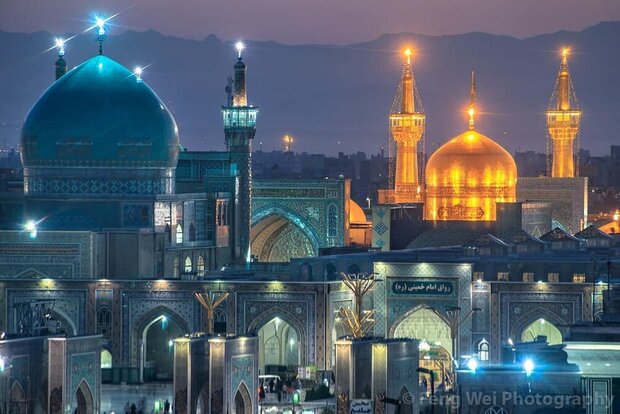Journey to faith: Iran pushes heritage agenda at UNESCO, seeks status for Razavi pilgrimage

TEHRAN – The spiritual tradition of pilgrimage to the holy shrine of Imam Reza (AS) along with sustained efforts to safeguard hospitality services for Razavi pilgrims may soon join UNESCO’s listing of cultural treasures.
Iran has asked the United Nations cultural agency UNESCO to recognize officially the concept of ‘Good safeguarding practices to improve hospitality services for Razavi Pilgrims’, an official said.
An all-inclusive dossier on the spiritual pilgrimage site and its associated rituals has been submitted to the UN cultural body for possible inscription on the register of good safeguarding practices, IRIB quoted Mostafa Pourali, who is in charge of Registration, Preservation, and Restoration of Spiritual and Natural Heritage sites at the Ministry of Heritage, Culture, Tourism, and Handicrafts, as saying on Wednesday.
As mentioned by the UN cultural body, the rituals and ceremonies merged with the pilgrimage rites are generated based on the social and religious needs and requirements rooted in the public believes, the consistency and persistence of which exhibit their significance and values.
Moreover, the tradition of pilgrimage to the holy shrine, which is situated in the northeastern city of Mashhad was registered on the National Intangible Cultural Heritage List by the Ministry of Cultural Heritage, Tourism and Handicrafts last year under the number 2015 upon a proposal offered by the tourism department of Khorasan Razavi province.
Mashhad, the provincial capital, is Iran’s holiest and second-largest city. Its raison d’être is the striking shrine complex of the eighth Shia Imam that is encircled by dozens of five-star hotels and many other accommodation centers. Mashhad and the buffer zone of the complex present a unique approach and exercise towards the development of pilgrimage areas during history concerning a city and its religious core, in a way that the expression of the pilgrimage concept can be vividly seen in the architectural and urban planning of the city.

The Imam Reza complex, in general also in detail enjoys unique creativity and genius, altogether has formed a unique cultural, artistic masterpiece all over the world. The architectural design of the complex has also complied with these traditions and rituals to address the needs of people and the urban landscape. Every year, over 20 million pilgrims visit the holy shrine and perform a set of traditions, one of which is the upper mentioned salutation rituals.
Historical data suggests that the complex has been developed in different stages of time according to the needs of the people and rituals associated with the holy shrine, yet the structure, design concepts, forms, material, tangible and intangible aspects, morphology, entering circumstances, praying rites and the spirit of the complex retained its authenticity and integrity the whole time and with legal and religious support of authorities and people.
The holy shrine boasts architectural and artistic elements of the Seljuk, Ilkhanid, Timurid, Safavid, Qajar, and the contemporary period.Going through the authentic literature on the initial status of the holy shrine elucidates that the shrine has also had a dome and court composition for the complex at its early stages. During the history of Iran, all the governments have had the concern to preserve and maintain the holy shrine as a value for all the generations and people and as an origin to retain the concepts constantly throughout centuries.
According to UNESCO, the holy shrine is the most significant element giving identity to the urban area of Mashhad. The city is of exceptional examples formed based on the Shia and pilgrimage culture. From a spiritual point of view, the complex has significance regarding the traditions, view rites to the holy shrine, approaching circumstances, saluting, Tawaf, consecration, etc.
Its buildings formed progressively during almost a thousand years, around which the city of Mashhad was created according to the needs of this outstanding pilgrimage center. The relation of the city and the holy shrine during different periods lead to a unique experience in the urban planning of the area, a practice which later transferred to the other pilgrimage cities by visitors especially Shias.
This way, the complex features a continuous artistic architectural style whose progress spreads over centuries, representing a unique masterpiece of creating a sacred space. It boasts architectural and artistic elements of the Seljuk, Ilkhanid, Timurid, Safavid, Qajar, and the contemporary period. A great number of important structures of the region, including schools, mosques, the memorials of the mystics. Especially in great Khorasan, have been inspired by this complex.
Regarding the cultural, historic, and architectural aspects, as mentioned by UNESCO, the complex could be comparable with several other religious complexes such as “Saint Peter’s Tomb” in the Vatican, “Mahabodhi Temple” in India, “Mount Emei” in China and “Lumbini” in Nepal.
AFM

Leave a Comment